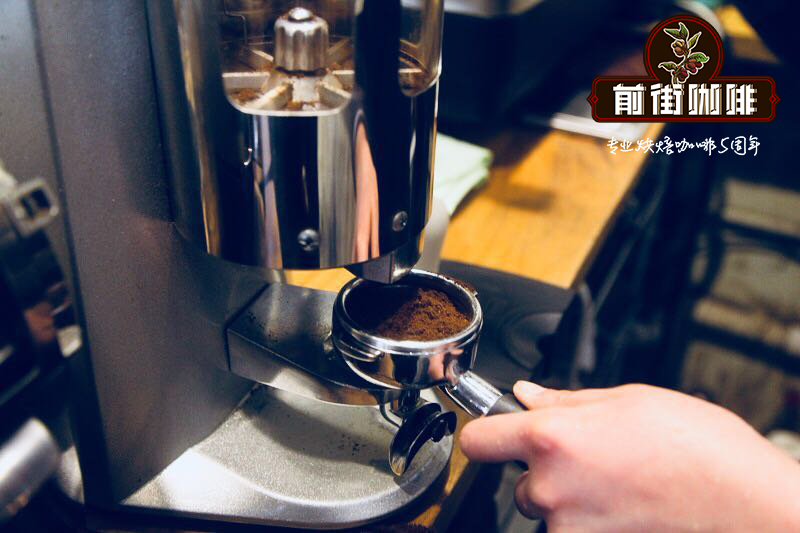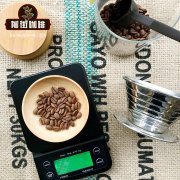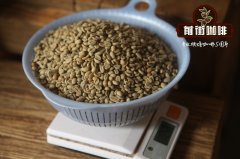Espresso | three factors determine how to adjust the speed at which you produce espresso.

1. Powder quantity
The amount of powder refers to the amount of dry coffee powder poured into the filter bowl. Ideally, an electronic scale with an accuracy of 0.1g is used to measure the amount of powder. The filter bowl of the handle usually has a capacity limit; if not marked, the amount of powder should not exceed the edge of the filter bowl. Once the amount of powder is determined, it should be taken as the standard to remain stable. For example, the amount of powder in my coffee machine is 20g, so I make sure it is 20g every time.
2. The output of the cup
Cup output refers to the total amount of espresso flowing into the coffee cup. Nowadays, people usually measure the cup by weight, but in the past, people are more used to measuring by volume. In order to ensure the quality of coffee, we should ensure that the reserve is stable. For example, if the amount of powder is 20g, the corresponding amount of powder should be 40g.
There will be a certain proportion between the amount of powder and the output of the cup. In the example we just gave, the ratio of powder to output is 1:2. The output of the cup can be adjusted as needed, but at the beginning, you need to make sure that the amount of powder and output remain stable, which will make it easier for you to understand the coffee extraction.
You can measure the output of the cup after weighing, or measure the volume directly with a coffee cup with a zona pellucida scale. Of course, the effect of weight measurement is more accurate.
3. Time
The last element is time, and sometimes people call it "velocity". Time is measured from the moment you start the extraction until the moment you stop the extraction. The standard espresso extraction time should be between 26 and 32 seconds.
If the flow rate is fast and the time is less than 25 seconds, the coffee may not be fully extracted and the taste is sour.
If the flow rate is slow and the time is more than 33 seconds, the coffee may be over-extracted and bitter.
If the time is exactly between 26 and 32 seconds, the extraction of coffee will be more balanced, sour, sweet and taste harmonious as a whole.
Adjustment grinding
Now we have prepared a basic espresso extraction formula, that is, "powder + cup volume + time", such as "20g:40g+26-32 seconds". But what if the extraction does not follow the formula? For example, the flow rate is too fast or too slow? At this point we need to adjust the grinding.
* if the flow rate is too fast and the time is less than 25 seconds, it means that the coffee powder in the filter bowl is too rough and should be adjusted more finely to slow down the flow rate.
* if the flow rate is too fast and the time is more than 33 seconds, it means that the coffee powder in the filter bowl is too fine and should be adjusted more coarsely to speed up the flow rate.
If this is incomprehensible, imagine a bucket of stones and a bucket of sand. In a bucket filled with stone, the gap between the stones is very large, and if you pour water, the water can easily flow through the gap; in a bucket filled with sand, the gap between the sand is very small. If you pour water, the water will be gradually absorbed by the sand and it will be difficult to reach the bottom of the bucket.
Finally, when adjusting the grinding, keep in mind that the coffee powder that has been ground before in the bean grinder still uses the previous parameters, and this small part of the coffee powder will still remain in the bean grinder. Therefore, after the adjustment, be sure to try to do 1-2 cup coffee test results. If it is a large commercial bean grinder, we usually test 3-4 cups.
Important Notice :
前街咖啡 FrontStreet Coffee has moved to new addredd:
FrontStreet Coffee Address: 315,Donghua East Road,GuangZhou
Tel:020 38364473
- Prev

Japanese companies develop new coffee treatment methods, frozen aging treatment to improve aroma and taste
The key coffee confirmed that the number of raw coffee beans increased after the picked coffee cherries were aged on ice for 15 days, and their flavor and flavor were also improved by roasting them. It was announced at the National Ice temperature Research Conference that the company has developed a key post-harvest processing technology that makes use of this effect. Ice-temperature aging is done by storing food before it freezes.
- Next

What is the scientific principle behind coffee grinding? How much effect does grinding have on a cup of coffee?
What's the difference between an ordinary cup of coffee and a perfect cup of coffee? Everything from the freshness of coffee beans to the way you cook them is one of the reasons. One of the most overlooked factors is the consistency of grinding, which seems trivial because the extraction begins with the direct addition of water. In fact, contrary to what you think, if you have made a serious comparison, you will certainly find
Related
- Beginners will see the "Coffee pull flower" guide!
- What is the difference between ice blog purified milk and ordinary milk coffee?
- Why is the Philippines the largest producer of crops in Liberia?
- For coffee extraction, should the fine powder be retained?
- How does extracted espresso fill pressed powder? How much strength does it take to press the powder?
- How to make jasmine cold extract coffee? Is the jasmine + latte good?
- Will this little toy really make the coffee taste better? How does Lily Drip affect coffee extraction?
- Will the action of slapping the filter cup also affect coffee extraction?
- What's the difference between powder-to-water ratio and powder-to-liquid ratio?
- What is the Ethiopian local species? What does it have to do with Heirloom native species?

